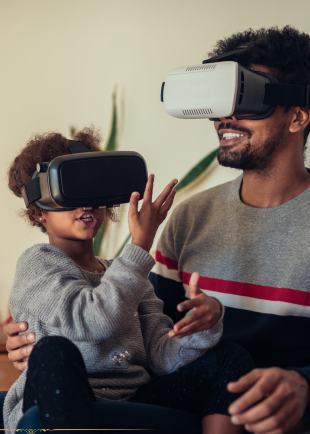Explore how Virtual Reality (VR) and Augmented Reality (AR) are transforming the education sector by making learning more interactive, engaging, and effective for students and educators.
Immersive Learning: How VR and AR Innovations are Shaping Education
Education is evolving beyond chalkboards and textbooks, entering a dynamic new era powered by immersive technologies like Virtual Reality (VR) and Augmented Reality (AR). These innovations are not merely futuristic gadgets—they are reshaping the way educators teach and students learn. Through immersive learning environments, VR and AR are creating more interactive, personalized, and engaging educational experiences that go far beyond traditional methods.
By blending digital elements with the real world (AR) or simulating entire environments (VR), these tools provide learners with a hands-on approach that deepens understanding and retention. From virtual science labs to historical re-creations and 3D anatomy explorations, the applications of immersive technology in education are vast and powerful.
Transforming Classrooms into Interactive Experiences
Virtual and augmented reality have the unique ability to turn passive lessons into active experiences. Instead of simply reading about ancient civilizations, students can take a virtual tour through the streets of Rome or explore the pyramids of Egypt in 3D. In science classes, learners can conduct experiments in a virtual lab without worrying about safety or resources. These interactive experiences promote curiosity and help learners grasp complex concepts with ease.
AR also enhances physical textbooks and classroom materials. When students point their devices at a page, they can view additional layers of content—animations, 3D models, or interactive quizzes. This kind of blended learning makes education both fun and informative, appealing to various learning styles and preferences.
Improving Engagement and Retention
One of the most significant advantages of immersive learning is its ability to boost student engagement. Learners are more focused and motivated when they are actively involved in their lessons. VR and AR remove distractions and immerse students in the subject matter, encouraging deeper concentration and a stronger emotional connection to the content.
Numerous studies have shown that students retain more information when they experience it in a virtual environment compared to traditional lectures or textbooks. By stimulating multiple senses and allowing for experiential learning, immersive technology ensures that knowledge is not only acquired but retained over the long term.
Bridging Gaps in Remote and Inclusive Education
Immersive learning tools are proving to be especially valuable in remote and inclusive education. In virtual classrooms, VR can simulate the experience of being present in a physical room, allowing students to collaborate and participate from anywhere in the world. This helps overcome geographical barriers and ensures that quality education is accessible to all, regardless of location.
For students with learning disabilities or special needs, AR and VR can be customized to suit individual requirements. For example, interactive tools can adjust content pacing, provide auditory support, or create calming environments for students with sensory sensitivities. These personalized approaches foster inclusivity and give every student the opportunity to thrive.
Enhancing Teacher Training and Professional Development
Educators are also benefiting from immersive technologies. VR platforms are being used for teacher training, allowing educators to simulate classroom scenarios and practice new teaching methods in a controlled environment. Whether it’s managing disruptive behavior or experimenting with new lesson plans, VR offers a risk-free space for professional growth.
AR applications assist teachers during real-time instruction by providing on-the-spot information, visual aids, and student progress tracking. These tools streamline classroom management and empower teachers to deliver more engaging and effective lessons.
Real-World Applications and Career Readiness
Immersive learning is not limited to academic subjects—it also plays a crucial role in preparing students for the real world. In vocational and technical education, VR is used to simulate complex tasks like welding, surgery, and machinery operation. This hands-on training reduces the need for physical equipment and minimizes risk, while still providing valuable experience.
Similarly, AR can be used in soft skills training, such as improving communication or public speaking. Virtual environments can mimic job interviews, customer service interactions, and teamwork scenarios, helping students build confidence and job readiness before entering the workforce.
The Future of Immersive Learning
As VR and AR technologies become more affordable and widespread, their presence in education is expected to grow rapidly. Emerging technologies like haptic feedback, AI integration, and spatial computing will further enhance immersion and learning outcomes. Educational institutions, EdTech companies, and governments are increasingly investing in immersive platforms, recognizing their potential to revolutionize how knowledge is delivered and consumed.
However, successful implementation requires more than just technology. Schools must ensure that educators are properly trained, content is curriculum-aligned, and infrastructure supports these innovations. When combined with thoughtful pedagogy, immersive learning can become a cornerstone of 21st-century education.
VR and AR are not just buzzwords—they represent a fundamental shift in educational philosophy. By turning lessons into experiences and passive learners into active participants, immersive learning is breaking down barriers, enhancing understanding, and creating a more inclusive and engaging future for education.
As we move forward into a digital-first world, embracing these technologies is no longer optional—it’s essential. With immersive learning, education becomes not only more accessible but also more exciting, meaningful, and transformative for learners of all ages.











